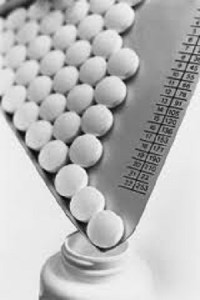Adverse Reactions to New Diabetes Drugs on the Rise
 As patients with type 2 diabetes are increasingly prescribed drugs known as SGLT2 inhibitors to treat their illness, adverse event reports associated with the drugs are on the rise, according to a recent publication by a consumer watchdog group. The Institute for Safe Medication Practices (ISMP) notes in their quarterly report that the most common side effects of the medications are genital fungal infections; however, they have also seen an increased number of potentially fatal instances of metabolic acidosis.
As patients with type 2 diabetes are increasingly prescribed drugs known as SGLT2 inhibitors to treat their illness, adverse event reports associated with the drugs are on the rise, according to a recent publication by a consumer watchdog group. The Institute for Safe Medication Practices (ISMP) notes in their quarterly report that the most common side effects of the medications are genital fungal infections; however, they have also seen an increased number of potentially fatal instances of metabolic acidosis.
SGLT2 inhibitors now on the market include canagliflozin (Invokana), dapagliflozin (Farxiga), and empagliflozin(Jardiance). Invokana was the first to be approved, in 2013. The other two drugs appeared the following year. As the ISMP report states, “Despite the lack of long-term data on safety and benefits, these new drugs have moved rapidly into widespread clinical use, according to data from IMS Health.” By the second quarter of 2015, canagliflozin had been prescribed 1.1 million times. Dapagliflozin followed with 411,000 prescriptions and empagliflozin with 136,000. The number of adverse event reports associated with SGLT2 inhibitors by that same period were 5484, 1805, and 455 respectively.
SGLT2 drugs come with increased infection risks
ISMP reports that the most commonly reported side effects of the new class of SGLT2 drugs are genital fungal infections, reported in 11.4% of women and 3.7% of men who used the drugs. According to the FDA, bacterial infections spreading to the kidneys are also a potentially serious possibility. (Previously, the ISMP had also noted other kidney problems associated with the drugs, including kidney stones and kidney failure.)
The heightened infection risk appears to be due to the way that the drugs function. Whereas many diabetes 2 drugs work by altering the way that insulin is produced in the body, SGLT2 drugs work by causing the kidneys to excrete the extra sugar that would otherwise stay in the blood. The increased sugar concentration in the bladder and urinary tract creates an environment conducive to the development of infections of various kinds.
FDA issues SGLT2 safety communications
The FDA has also issued two safety communications concerning potential connections between SGLT2 drugs and a potentially serious disorder known as metabolic acidosis. On May 15, the agency announced that there had been 20 reports received between March 2013 to June 6, 2014 concerning the condition among those taking SGLT2 drugs. No deaths took place in connection to these reports; however, all patients required either emergency room visits or hospitalization. The ISMP reports that “Over the past 12 months we identified 168 possible cases for canagliflozin, 80 for dapagliflozin, and 12 for empagliflozin.”
Acidosis occurs when acids build up in the blood at dangerous levels. Untreated, it can lead to dehydration, loss of consciousness, coma, and death. The FDA emphasized that further study of the connection between the drugs and the condition was necessary, but cautioned all who noticed symptoms (including difficulty breathing, nausea, vomiting, abdominal pain, confusion, unexplained fatigue or drowsiness, or sweet-smelling breath) to seek medical attention.
- ISMP, Quarter Watch http://www.ismp.org/QuarterWatch/pdfs/2015Q2.pdf
- ISMP, Quarter Watch http://www.ismp.org/quarterwatch/
- Reuters, FDA warns on newer class of type 2 diabetes drugs http://www.reuters.com/article/2015/05/15/us-fda-diabetes-idUSKBN0O01P520150515
- FDA, FDA Drug Safety Communication: FDA warns that SGLT2 inhibitors for diabetes may result in a serious condition of too much acid in the blood http://www.fda.gov/Drugs/DrugSafety/ucm446845.htm


 Resources
Resources
 Resources
Resources
